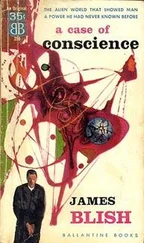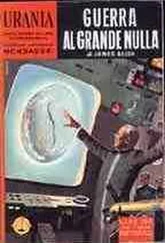James Blish - Cities in Flight
Здесь есть возможность читать онлайн «James Blish - Cities in Flight» весь текст электронной книги совершенно бесплатно (целиком полную версию без сокращений). В некоторых случаях можно слушать аудио, скачать через торрент в формате fb2 и присутствует краткое содержание. Жанр: Фантастика и фэнтези, на английском языке. Описание произведения, (предисловие) а так же отзывы посетителей доступны на портале библиотеки ЛибКат.
- Название:Cities in Flight
- Автор:
- Жанр:
- Год:неизвестен
- ISBN:нет данных
- Рейтинг книги:4 / 5. Голосов: 1
-
Избранное:Добавить в избранное
- Отзывы:
-
Ваша оценка:
- 80
- 1
- 2
- 3
- 4
- 5
Cities in Flight: краткое содержание, описание и аннотация
Предлагаем к чтению аннотацию, описание, краткое содержание или предисловие (зависит от того, что написал сам автор книги «Cities in Flight»). Если вы не нашли необходимую информацию о книге — напишите в комментариях, мы постараемся отыскать её.
Cities in Flight — читать онлайн бесплатно полную книгу (весь текст) целиком
Ниже представлен текст книги, разбитый по страницам. Система сохранения места последней прочитанной страницы, позволяет с удобством читать онлайн бесплатно книгу «Cities in Flight», без необходимости каждый раз заново искать на чём Вы остановились. Поставьте закладку, и сможете в любой момент перейти на страницу, на которой закончили чтение.
Интервал:
Закладка:
“Somewhere along in there, I got married and we had one son; he was born the same day I entered space school. Two years later, the marriage was annulled. That sounds funny, I know, but the circumstances were unusual.
“When Pfitzner approached me and asked me to pick up soil samples for them, I suppose I saw another church with which I could identify myself—something humanitarian, long-range, impersonal. And when I found this afternoon that the new church wasn’t going to welcome the convert with glad cries—well, the result is that I’m now weeping on your shoulder.” He smiled. “That’s hardly flattering, I know. But you’ve already helped me to talk myself into a spot where the only next step is to apologize, which I hereby do. I hope you’ll accept it.”
“I think I will,” she said, and then, tentatively, she smiled back. The result made him tingle as though the air-pressure had dropped suddenly by five pounds per square inch. Anne Abbott was one of those exceedingly rare plain girls whose smiles completely transform them, as abruptly as the bursting of a star-shell. When she wore her normal, rather sullen expression, no one would ever notice her—but a man who had seen her smile might well be willing to kill himself working to make her smile again, as often as possible. A woman who was beautiful all the time, Paige thought, probably never could know the devotion Anne Abbott would be given when she found that man.
“Thank you,” Paige said, rather inadequately. “Let’s order, and then I’d like to hear you talk. I dumped The Story of My Life into your lap rather early in the game, I’m afraid.”
“You order,” she said. “You talked about flounder this afternoon, so you must know the menu here—and you handed me out of the Caddy so nicely that I’d like to preserve the illusion.”
“Illusion?”
“Don’t make me explain,” she said, coloring faintly. “But …. Well, the illusion of there being one or two cavaliers in the world still. Since you haven’t been a surplus woman on a planet full of lazy males, you wouldn’t understand the value of a small courtesy or two. Most men I meet want to be shown my mole before they’ll bother to learn my last name.”
Paige’s surprised shout of laughter made heads turn all over the restaurant. He throttled it hurriedly, afraid that it would embarrass the girl, but she was smiling again, making him feel instead as though he had just had three whiskies in quick succession.
“That’s a quick transformation for me,” he said. “This afternoon I was a blackmailer, and by my own intention, too. Very well, then, let’s have the flounder; it’s a specialty of the house. I had visions of it while I was on Ganymede munching my concentrates.”
“I think you had the right idea about Pfitzner,” Anne said slowly when the waiter had gone. “I can’t tell you any secrets about it, but maybe I can tell you some bits of common knowledge that you evidently don’t know. The project the plant is working on now seems to me to fit your description exactly: it’s humanitarian, impersonal, and just about as long-range as any project I can imagine. I feel rather religious about it, in your sense. It’s something to tie to, and it’s better for me than being a Believer or a WAC. And I think you could understand why I feel that way—better than either Hal Gunn or I thought you could.”
It was his turn to be embarrassed. He covered by dosing his Blue Points with Worcestershire until they flinched visibly. “I’d like to know.”
“It goes like this,” she said. “In between 1940 and 1960, a big change took place in Western medicine. Before 1940—in the early part of the century—the infectious diseases were major killers. By 1960 they were all but knocked out of the running. The change started with the sulfa drugs; then came Fleming and Florey and mass production of penicillin during World War II. After that war we found a whole arsenal of new drugs against tuberculosis, which had really never been treated successfully before—streptomycin, PAS, isoniazid, viomycin, and so on, right up to Bloch’s isolation of the TB toxins and the development of the metabolic blocking agents.
“Then came the broad-spectrum antibiotics, like Terramycin, which attacked some virus diseases, protozoan diseases, even worm diseases; that gave us a huge clue to a whole set of tough problems. The last major infectious disease—bilharzia, or schistosomiasis—was reduced to the status of a nuisance by 1966.”
“But we still have infectious diseases,” Paige objected.
“Of course we do,” the girl said, the little atom points in her brooch picking up the candle-light as she leaned forward. “No drug ever wipes out a disease, because it’s impossible to kill all the dangerous organisms in the world just by treating the patients they invade. But you can reduce the danger. In the 1950’s, for instance, malaria was the world’s greatest killer. Now it’s as rare as diphtheria. We still have both diseases with us—but how long has it been since you heard of a case of either?”
“You’re asking the wrong man—germ diseases aren’t common on space vessels. We bump any crewman who shows up with as much as a head-cold. But you win the point, all the same. Go on. What happened then?”
“Something kind of ominous. Life insurance companies, and other people who kept records, began to be alarmed at the way the degenerative diseases were coming to the fore. Those are such ailments as hardening of the arteries, coronary heart disease, embolisms, and almost all the many forms of cancer—diseases where one or another body mechanism suddenly goes haywire, without any visible cause.”
“Isn’t old age the cause?”
“No,” the girl said forcefully. “Old age is just the age; it’s not a thing in itself, it’s just the time of life when most degenerative diseases strike. Some of them prefer children—leukemia or cancer of the bone marrow, for instance. When the actuaries first began to notice that the degenerative diseases were on the rise, they thought that it was just a sort of side-effect of the decline of the infectious diseases. They thought that cancer was increasing because more people were living long enough to come down with it. Also, the reporting of the degenerative diseases was improving, and so part of the rise in incidence really was an illusion—it just meant that more cases than before were being detected.
“But that wasn’t all there was to it. Lung cancer and stomach cancer in particular continued to creep up the statistical tables, far beyond the point which could have been accounted for by better reporting, or by the increase in the average life-span, either. Then the same thing took place in malignant hypertension, in Parkinsonism and other failures of the central nervous system, in muscular dystrophy, and so on, and so on. It began to look very much as though we’d exchanged a devil we knew for a devil we didn’t.
“So there was quite a long search for a possible infectious origin for each of the degenerative diseases. Because some animal tumors, like poultry sarcoma, are caused by viruses, a lot of people set to work hunting like mad for all kinds of cancer viruses. There was a concerted attempt to implicate a group called the pleuropneumonia-like organisms as the cause of the arthritic diseases. The vascular diseases, like hypertension and thrombosis, got blamed on everything from your diet to your grandmother.
“And it all came to very little. Oh, we did find that some viruses did cause some types of cancer, leukemia among them. The PPLO group does cause a type of arthritis, too, but only the type associated with a venereal disease called essential urethritis. And we found that the commonest of the three types of lung cancer was being caused by the radio-potassium content of tobacco smoke; it was the lip and mouth cancers that were caused by the tars. But for the most part, we found out just what we had known before—that the degenerative diseases weren’t infectious. We’d already been down that dead end.
Читать дальшеИнтервал:
Закладка:
Похожие книги на «Cities in Flight»
Представляем Вашему вниманию похожие книги на «Cities in Flight» списком для выбора. Мы отобрали схожую по названию и смыслу литературу в надежде предоставить читателям больше вариантов отыскать новые, интересные, ещё непрочитанные произведения.
Обсуждение, отзывы о книге «Cities in Flight» и просто собственные мнения читателей. Оставьте ваши комментарии, напишите, что Вы думаете о произведении, его смысле или главных героях. Укажите что конкретно понравилось, а что нет, и почему Вы так считаете.












